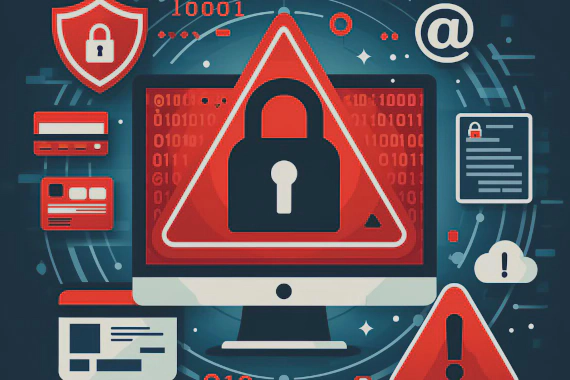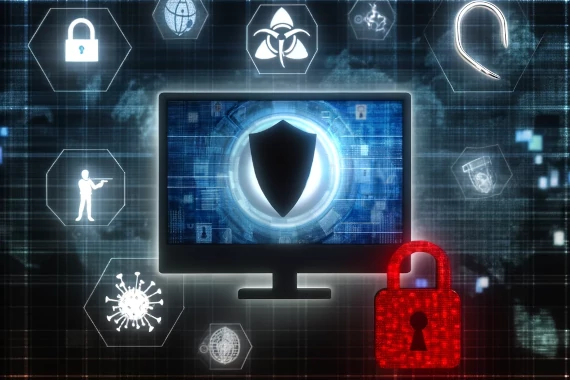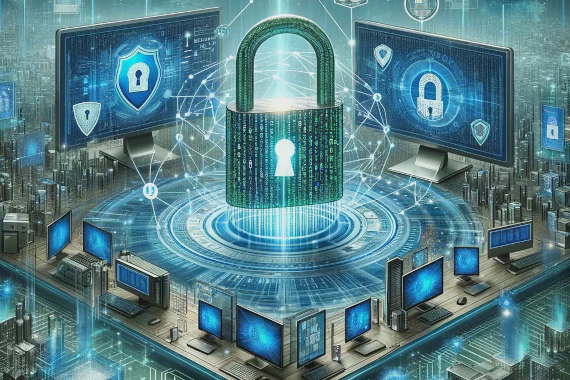The global cost of cybercrime is expected to nearly triple from $8.44 trillion in 2022 to $23.84 trillion in 2027 (World Economic Forum).
With every new technology adapted within an organization, the attack surface for bad actors to exploit increases.
Remember, today’s external attack surface goes way beyond your corporate network.
It includes many other elements, such as your cloud infrastructure, third-party vendors, external source code repositories, and breached data.
It’s crucial for organizations to understand the external threats they face in order to properly mitigate these risks.
In this post, you’ll learn about the most common external threats , how to detect them, and most importantly how to prevent them.
What are External Threats?
External threats are cybersecurity risks originating from outside an organization that targets an organization’s network, systems, or data. These threats can often be divided into three categories, each requiring its own specific strategy to mitigate.
- Malicious Software (e.g., ransomware)
- Social Engineering (e.g., phishing emails)
- Network-based Threats (e.g., SQL Injection)
Types of External Threats
By understanding the specific threats within each category, you can properly defend against it. Here’s a breakdown of the most common threats:
Malicious Software and Code-based Threats:
- Malware: Viruses, worms, Trojans, ransomware, spyware.
- Fileless malware: Malicious software that operates in memory without a file on disk.
- Rootkits: Software designed to gain unauthorized access to systems.
- Botnets: Networks of compromised computers used for malicious purposes.
- Zero-day exploits Attacks targeting unknown vulnerabilities.
Social Engineering and Phishing Attacks:
- Phishing: Attempts to trick users into revealing sensitive information.
- Spear phishing: Targeted phishing attacks against specific individuals or organizations.
- Whaling: Phishing attacks targeting high-profile individuals or executives.
- Vishing: Phishing attacks conducted over voice communication channels (e.g., phone calls).
- Smishing: Phishing attacks conducted via SMS or text messages.
Network-based Threats:
- Credential Theft: Attackers steal credentials through various means, such as infostealer malware or third-party data breaches, and gain unauthorized access to sensitive data.
- SQL injection attacks: Exploiting vulnerabilities in web applications to execute malicious SQL queries.
- Session hijacking: Stealing an authenticated session to impersonate a user.
- Denial of Service (DoS) and Distributed Denial of Service (DDoS) attacks.
- Man-in-the-Middle (MitM) attacks: Intercepting and possibly altering communication between two parties.
Types of External Threat Actors
When it comes to external cyber threats, the most common external malicious actors include:
- Cybercriminals: These are individuals or groups that are primarily driven by financial gain. They often use stolen credentials, malware, or phishing to steal sensitive information, disrupt operations, or extort money from victims.
- Organized Crime Groups: These groups engage in a variety of cybercriminal activities, including fraud, identity theft, and ransomware attacks, often as part of larger criminal enterprises.
- Nation-State Actors: These are government-sponsored groups that conduct cyber espionage, sabotage, or warfare to further national interests. They are often well-funded and sophisticated, targeting critical infrastructure, government agencies, and strategic industries.
- Hacktivists: These are individuals or groups that use cyber attacks to promote political or social agendas. They often target organizations or governments they perceive as unethical or unjust, using tactics like website defacement, data leaks, and distributed denial-of-service (DDoS) attacks.
- Internal Threats: While not always external, insiders can pose a significant threat when they act in collaboration with external actors. This can include employees, contractors, or business partners who misuse their access to systems and data for malicious purposes.
- Terrorist Groups: Some terrorist organizations have developed cyber capabilities to further their goals. They may use cyber attacks to disrupt critical infrastructure, spread propaganda, or coordinate attacks.
- Script Kiddies: These are inexperienced hackers who use pre-written scripts to conduct external attacks. While they may lack sophistication, they can still cause significant damage, especially if they exploit known vulnerabilities.
How to protect against external threats
Detecting attacks and protecting your organization from external threats requires a multi-layered approach. Here are some controls that, when implemented together, can significantly reduce the risk of external threats.
- Access Controls and User Authentication: Implementing strong access controls and multi-factor authentication (MFA) to ensure that only authorized users can access sensitive systems and data.
- Network Segmentation: Dividing the network into segments limits the spread of attacks and makes it easier to isolate compromised segments.
- Encryption: Encrypting data in transit and at rest to protect it from interception or theft.
- Secure Configuration and Patch Management: Regularly updating and patching operating systems, applications, and network devices to fix vulnerabilities and reduce the attack surface.
- Regular Security Assessments: Conduct regular security assessments, penetration testing, and vulnerability scanning to identify and mitigate potential security weaknesses.
- Anomaly Detection: Using machine learning and analytics to detect unusual network patterns or deviations from normal behavior can help identify potential threats.
- Security Information and Event Management (SIEM): Collecting and analyzing security logs and events in real-time to detect and respond to threats quickly.
- Firewalls and Intrusion Prevention Systems (IPS): These act as the first line of defense, controlling incoming and outgoing network traffic based on predetermined security rules and detecting and preventing malicious activities.
- Antivirus and Anti-malware Solutions: Regularly updated antivirus software can detect and remove malware before it can cause damage.
- Endpoint Protection: Securing all endpoints (computers, mobile devices, etc.) with security software to help detect and prevent malware infections and other threats on individual devices.
- Awareness Training: Educate employees about security best practices, phishing scams, and other social engineering tactics to reduce the risk of human error.
- Incident Response Plan: Having a well-defined incident response plan to quickly contain, eradicate, and recover from security incidents.
- Backup and Disaster Recovery: Regularly backing up critical data and having a disaster recovery plan in place to ensure business continuity in the event of a cyber attack.
- Threat Intelligence: Utilizing threat intelligence feeds provides up-to-date information about known threats and vulnerabilities, allowing organizations to proactively defend against them.
- Dark Web Monitoring: Monitor the dark web for leaked or stolen credentials, session tokens, or sensitive data related to your organization to prevent unauthorized access to your systems.
According to the Verizon Data Breach Investigations Report, 86% of data breaches use stolen credentials for initial access.
If your security team needs visibility into the darknet to stop external threats, book a demo with Breachsense to learn how we can help.



